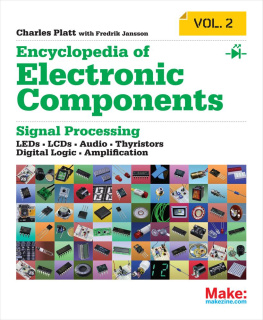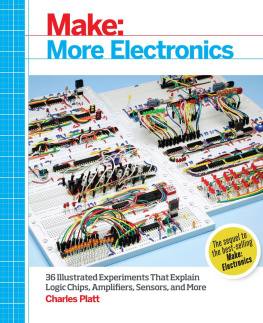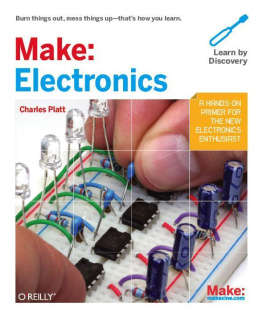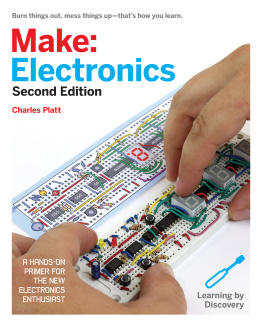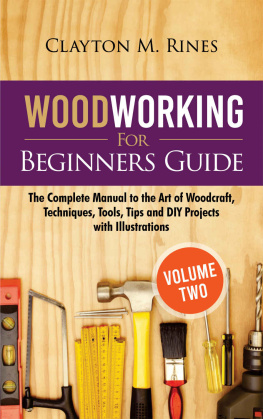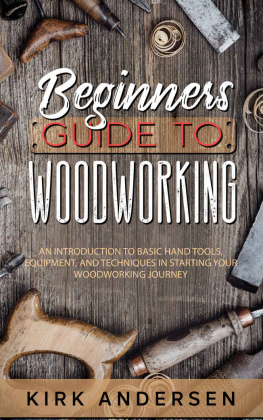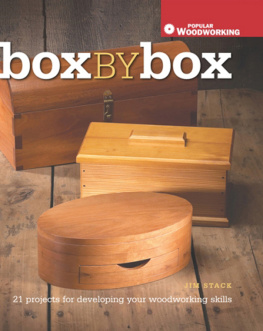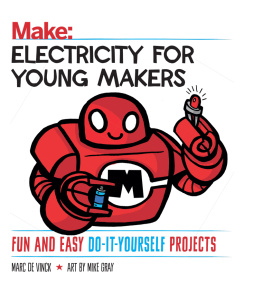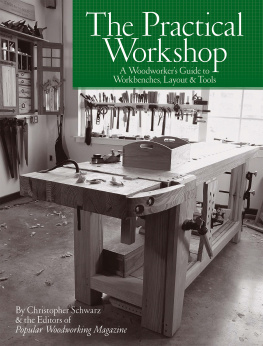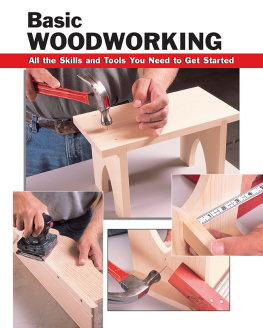
Appendix
Buying Guide
This appendix tells you where to obtain tools and supplies, and summarizes the requirements for each project in the book.
Tools
The tools that I am recommending for the projects in this book can be divided into three groups:
Essential tools. A handsaw is the most obvious example, as almost every project requires you to cut materials with a saw. But a plastic-cutting knife is also essential if you want to score and snap acrylic plastic. The table in Figure A-1 shows which tools are essential for each of the projects. See .
Optional, not essential. These tools will make your task easier, but if youre on a tight budget, you can omit them. An electric screwdriver is a good example. You can use a manual screwdriver, so long as you dont mind taking a little more time and expending a bit more effort. See .
Tools for future use. suggests additional tools that you can buy if you become more serious about making things in the future. Fact sheets scattered through the book also include some ideas.
Supplies
Supplies are divided into two categories: buy-what-you-need, shown on .
If you dont intend to build some of the projects, theres no point in buying supplies for them. For instance, the one-by-two wood for the bookcase in is not used in any other project, so you can skip it if youre not interested in the bookcase.
Some types of supplies are sufficient for any number of projects in the book. Carpenters glue is an example. One bottle will be enough, and youll still have most of it left over at the end. Figure A-4 shows where each supply is used in a particular project, but you can be confident that a single purchase of each of the items listed will be sufficient for all the projects.
What I Hope You Have
Im assuming that you already have letter-sized white paper, pencils, a pencil sharpener, an eraser, a fine-point black water-based roller-ball pen such as the ones made by Uniball, and a couple of other colors of any kind of pen or pencil. You should also have paper towels, and some clean rags. If you choose to use oil-based polyurethane or stain, and you make a mess, youll need some mineral spirits or paint thinner to clean it up.
All other tools and supplies should be itemized in the tables on the following pages.
Where to Buy
I like to shop online as much as possible, but when Im looking for tools and materials, I go to a store where I can examine the merchandise in person. This is especially true when shopping for large pieces of wood.
Wood
Many times I have sorted through a stack of two-by-fours, rejecting 80 percent of them because of their poor quality. Youll need to perform this kind of inspection of the two-by-fours and one-by-sixes that you purchase for projects in this book.
In the United States, you can shop for lumber at nationwide chains such as The Home Depot, Lowes, Ace Hardware, or True Value, but you may find better quality if youre lucky enough to live within reach of a smaller, independent lumber yard. The only way to find out is to go and take a look.
For good-quality plywood and for the dowels that I have used extensively in this book, big-box stores and chains may have an incomplete stock of sizes, and the dowels that they sell may be made from pine. This is frustrating, because youll get better results with dowels made from hardwood such as oak, maple, or poplar. Usually a sticker with a bar code will tell you what kind of wood you are dealing with, but pine is easily recognized by the clearly defined brown-and-cream colored stripes of its grain.
Crafts stores such as Michaels or Hobby Lobby usually stock square and round dowels, and will also have small pieces of high-quality plywood, such as the 1/8 " birch required for the parquetry project in . The prices in crafts stores tend to be relatively high, though.
Adding it up, your best option for relatively small pieces of quality wood may be to shop online. A wide range of hardwood dowels and hardwood-veneered plywood can be found from suppliers selling through Amazon. You can also buy from carpentry supply sites such as www.woodcraft.com . A search engine will turn up more options.
Other Materials
For plastic supplies, I like to use TAP Plastics at www.tapplastics.com or United States Plastic Corp at www.usplastic.com . TAP has useful videos on its site, and both companies employ knowledgeable telephone help. Dont hesitate to pick up the phone and ask questions. But if you just want pieces of ABS or acrylic that are 12" x 12" or 12" x 24", eBay may be less expensive.
In fact, eBay is often my starting point for almost any crafts-related browsing.
Fasteners
All the nails, bolts, and screws for projects in this book should be stocked in any hardware store, except for the very small #2 size screws that I specified in a couple of projects, and the partially-threaded bolts that I suggested for the pantograph in .
One source can always be guaranteed to have these and any other fasteners that you want: www.mcmaster.com , the web site for McMaster-Carr, which probably stocks a wider range of hardware than any other supplier in the world. They arent the cheapest, but I believe they are the best, not only in terms of their inventory but in their speed of delivery, their customer service, and the general information on their web site.
Tools
For low prices, Harbor Freight Tools is widely recognized as a bargain-basement source. They have more than 700 retail outlets, or you can order from www.harborfreight.com . Buying multiple tools and supplies from a single source can save time, but inevitably, cheap products are not always the best. Regular customers of Harbor Freight claim that its a great place for some things, but not others. I cant advise you on that, but if you search online for harbor freight reviews, youll find a lot of useful information.
Sears is still a viable retail source for moderately priced tools (at the time of writing), while Northern Tool sells name brands affordably at www.northerntool.com .
Sorry, No Kits!
If you were hoping that I could offer you a kit of tools and supplies ready-made for this book, I have to disappoint you. Stocking and shipping a collection of heavy items such as clamps and saws, and 8-foot lengths of two-by-fours, was obviously not practical.
When I started writing the book, I knew that you would have to do your own shopping, so I tried to minimize the requirements. I am hoping that you should be able to get what you need without too much trouble. As a general rule, I suggest you search Amazon and eBay first, to get an idea of whats available and how much it costs. Then go shopping for the tools and supplies that you prefer to examine in person, and buy the remaining things online.
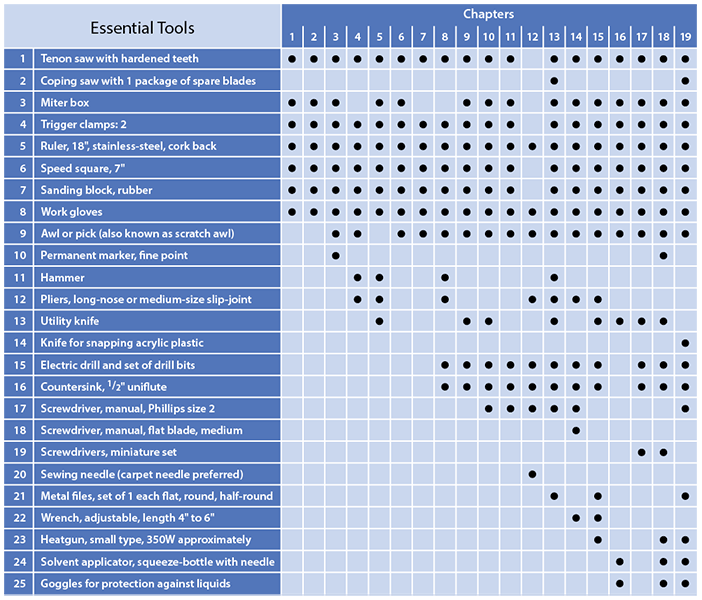
Figure A-1. Essential Tools.
Notes Regarding Essential Tools
These notes are keyed to the line numbers in the table in Figure A-1.
- Tenon saws, also known as back saws or miter saws, often dont have hardened teeth, but I consider this feature essential to minimize your effort. Stanley FatMax 17-202 is my preferred choice. Other options are Pro-Grade 31968, the Irwin Plus 955, or the Silverline Tri-Cut model 456935, although this last one is shorter than I would prefer.
- I doubt you gain any advantage from spending more than the minimum on this type of saw.


